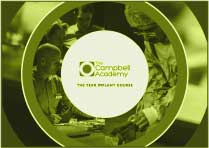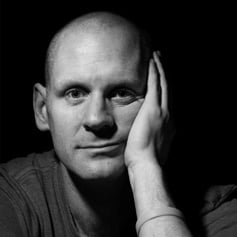
In the extraordinary ‘The 100-Year Life’ book written by Lynda Gratton and Andrew J. Scott there is a terrific explanation of why people are less likely to invest in their pension than they should.
Most of us basically have an inability to visualise ourselves as an older version of that which we see now in the mirror and therefore cannot make a rational link between saving for later and spending now (at least to any great degree).
When someone took over the responsibility, say a company pension or an NHS pension or superannuation then it could happen when you ask individuals to do it themselves (unless they have an extraordinary amount of money) they find it difficult to make the jump between being 30 and being 65.
Research has shown that if you use computer generation to age an individual and show them pictures of their future self, it increases their willingness to invest in themselves for the future several times over.
Perhaps we should do this for health.
Perhaps we should show future versions of ourselves and explain clearly the implications of what we’re doing at the moment in not investing in our non tangible assets.
The ability to ‘see the future’ is probably becoming one of the greatest skills that leads to success and contentment and happiness for at least some sections of the population.
It’s perhaps worth thinking about if you have children that are still at the age of being influenced.
Recently I started to read Bobby Gillespie’s beautiful autobiography ‘Tenement’ (Gillespie was one of the founders and lead singers of Primal Scream) and his descriptions of being brought up in Glasgow in the 70’s and 80’s brought back real memories of some of the places I encountered in my own youth.
If you’d explained to me then anything like where I might be now then I think perhaps I would be better prepared.
If I explained to my children where I think they might be then, then the same will apply to them.
This of course takes for granted the fact that I might have some vision of what ‘over there’ might look like.
If you take my own profession as a possible example and a metaphor for what is coming next and for the shattering of allusions and comfort zones and paradigms, that would perhaps be a good place to start. At least for someone in my shoes.
Although 1997 seems a long time ago now, in that short 25 years ‘being a dentist’ has utterly changed out of sight for all but a very few people who are trying to cling onto the 20th century.
The people at the cutting edge of dentistry now are at such a sharper, faster moving edge than anybody was in 1997 it’s hard to believe.
The opportunities in dentistry (at least for patients who are prepared to pay for it) are staggering. The risk of being caught in a status quo of mediocrity though is no less huge.
Future scoping what might happen next, both with NHS contracts and delivery and in expansion of private practice and payment methods and delivery methods and business models would be absolutely fundamental for people planning to stay in this game for any more than the next few years.
Where are the people that are helping us with this?
Where are the leaders who are looking forwards, with the time to scope and the time to drain and the time to imagine?
Entering my 51st year and my 28th in dentistry I hope that I’m not even half way through yet.
Health and circumstance and any number of challenges might cut that short for me but if it doesn’t I’ve got more than the same again and it’s time to look to see what that and the world and my children might look like 30 years from now.
Blog Post Number - 2967





Leave a comment